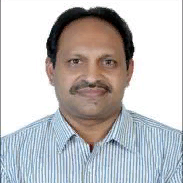
G.M.S.Reddy
Work place: Scientist ‘G’ Defence Metallurgical Research Laboratory[DMRL], MJG group Hyderabad 500058, India
E-mail:
Website:
Research Interests: Computational Science and Engineering, Engineering
Biography
Dr. G. Madhusudhan Reddy has been working in Defence Metallurgical Research Laboratory, Hyderabad. He has made significant contributions in the area of joining of similar and dissimilar metals using fusion and solid state joining processes. He has also been instrumental in setting up of the state-of-the-art welding facilities at DMRL. He is member of the Editorial Board of Defence Technology Journal and Indian Institute of Welding Journal. He received numerous awards and among them are Best Metallurgist award from the Ministry of Steel, Government of India, DRDO Scientist of the Year Award from Ministry of defence, Government of India, Keith Hartley memorial Award of the Indian Institute of Welding, SK Mazumdar Memorial Award of the Indian Welding Society. He has more than 400 research publications. AICTE-INAE Distinguished Visiting Professor at University of Hyderabad and Andhra University. He is Fellow of the Indian National Academy of Engineering, American Society of Metals, Indian Institute of Metals, Indian Welding Society and Telangana Academy of Sciences.
Author Articles
Process Parameters Influence on Impact Toughness and Microstructure of Pre-heat Treated Friction Welded 15CDV6 Alloy Steel
By D. Raji Reddy P.Laxminarayana G.C.M. Reddy G.M.S.Reddy
DOI: https://doi.org/10.5815/ijem.2016.05.05, Pub. Date: 8 Sep. 2016
Friction welding is a solid state joining process the joints are formed by utilizing the heat generated by friction. This paper discusses the importance of impact toughness in friction welded components and the effect of various process parameters on impact toughness. The process parameters considered in this research work are friction force, Forge force, rotational speed and burn-off length for the 15CDV6 alloy steel and the Impact toughness is optimized to establish the weld quality using the Taguchi experimental design technique with an orthogonal array of L9, ANOVA. The effects of process parameters are discussed in detail based on the values obtained in the ANOVA and micro structural observations.
[...] Read more.Other Articles
Subscribe to receive issue release notifications and newsletters from MECS Press journals